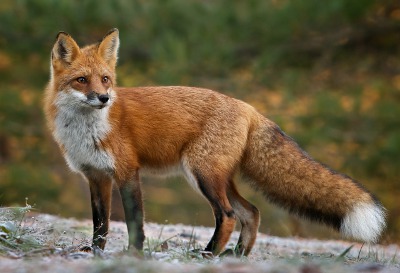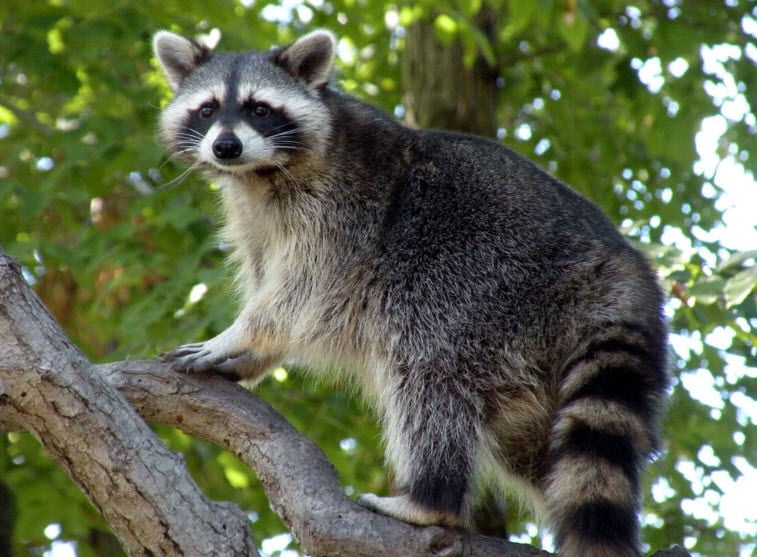Post by dinosauria101 on May 30, 2019 9:16:09 GMT 5
Red Fox - Vulpes vulpes
The red fox (Vulpes vulpes) is the largest of the true foxes, as well as being the most geographically spread member of the Carnivora, being distributed across the entire northern hemisphere from the Arctic Circle to North Africa, Central America and the steppes of Asia. Its range has increased alongside human expansion, having been introduced to Australia, where it is considered harmful to native mammal and bird populations. Red foxes have elongated bodies and relatively short limbs. The tail, which is longer than half the body length (70% of head and body length), is long, fluffy and reaches the ground when in a standing position. Red foxes are the largest species of the genus Vulpes. However, relative to dimensions, red foxes are much lighter than similarly sized dogs of the Canis genus. Their limb bones, for example, weigh 30% less per unit area of bone than expected for similarly sized dogs. They display significant individual, sexual, age and geographical variation in size. On average, adults measure 35–50 cm (14–20 in) high at the shoulder and 45 to 90 cm (18 to 35 in) in body length with tails measuring 30 to 63 in (760 to 1,600 mm). The ears measure 7.7–12.5 cm (3–5 in) and the hind feet 12–18.5 cm (5–7 in). They weigh 2.2 to 14 kg (4.9 to 31 lb).

Common Raccoon - Procyon lotor
The raccoon, Procyon lotor (sometimes spelled as 'racoon'), also known as the common raccoon, North American raccoon, northern raccoon and colloquially as coon, is a medium-sized mammal native to North America. he body weight of an adult raccoon varies considerably with habitat; it can range from 2 to 14 kilograms (4 to 30 lb), but is usually between 3.5 and 9 kilograms (8 and 20 lb). The smallest specimens are found in Southern Florida, while those near the northern limits of the raccoon's range tend to be the largest. Males are usually 15 to 20% heavier than females. At the beginning of winter, a raccoon can weigh twice as much as in spring because of fat storage. It is one of the most variably sized of all mammals. The largest recorded wild raccoon weighed 28.4 kg (62.6 lb) and measured 140 cm (55 in) in total length, by far the largest size recorded for a procyonid. The raccoon is usually nocturnal and is omnivorous, with a diet consisting of about 40% invertebrates, 33% plant foods, and 27% vertebrates. It has a grayish coat, of which almost 90% is dense underfur, which insulates against cold weather. Two of its most distinctive features are its extremely dexterous front paws and its facial mask, which are themes in the mythology of several Native American tribes. Raccoons are noted for their intelligence, with studies showing that they are able to remember the solution to tasks up to three years later.

Credit to Wikipedia
The red fox (Vulpes vulpes) is the largest of the true foxes, as well as being the most geographically spread member of the Carnivora, being distributed across the entire northern hemisphere from the Arctic Circle to North Africa, Central America and the steppes of Asia. Its range has increased alongside human expansion, having been introduced to Australia, where it is considered harmful to native mammal and bird populations. Red foxes have elongated bodies and relatively short limbs. The tail, which is longer than half the body length (70% of head and body length), is long, fluffy and reaches the ground when in a standing position. Red foxes are the largest species of the genus Vulpes. However, relative to dimensions, red foxes are much lighter than similarly sized dogs of the Canis genus. Their limb bones, for example, weigh 30% less per unit area of bone than expected for similarly sized dogs. They display significant individual, sexual, age and geographical variation in size. On average, adults measure 35–50 cm (14–20 in) high at the shoulder and 45 to 90 cm (18 to 35 in) in body length with tails measuring 30 to 63 in (760 to 1,600 mm). The ears measure 7.7–12.5 cm (3–5 in) and the hind feet 12–18.5 cm (5–7 in). They weigh 2.2 to 14 kg (4.9 to 31 lb).

Common Raccoon - Procyon lotor
The raccoon, Procyon lotor (sometimes spelled as 'racoon'), also known as the common raccoon, North American raccoon, northern raccoon and colloquially as coon, is a medium-sized mammal native to North America. he body weight of an adult raccoon varies considerably with habitat; it can range from 2 to 14 kilograms (4 to 30 lb), but is usually between 3.5 and 9 kilograms (8 and 20 lb). The smallest specimens are found in Southern Florida, while those near the northern limits of the raccoon's range tend to be the largest. Males are usually 15 to 20% heavier than females. At the beginning of winter, a raccoon can weigh twice as much as in spring because of fat storage. It is one of the most variably sized of all mammals. The largest recorded wild raccoon weighed 28.4 kg (62.6 lb) and measured 140 cm (55 in) in total length, by far the largest size recorded for a procyonid. The raccoon is usually nocturnal and is omnivorous, with a diet consisting of about 40% invertebrates, 33% plant foods, and 27% vertebrates. It has a grayish coat, of which almost 90% is dense underfur, which insulates against cold weather. Two of its most distinctive features are its extremely dexterous front paws and its facial mask, which are themes in the mythology of several Native American tribes. Raccoons are noted for their intelligence, with studies showing that they are able to remember the solution to tasks up to three years later.

Credit to Wikipedia





